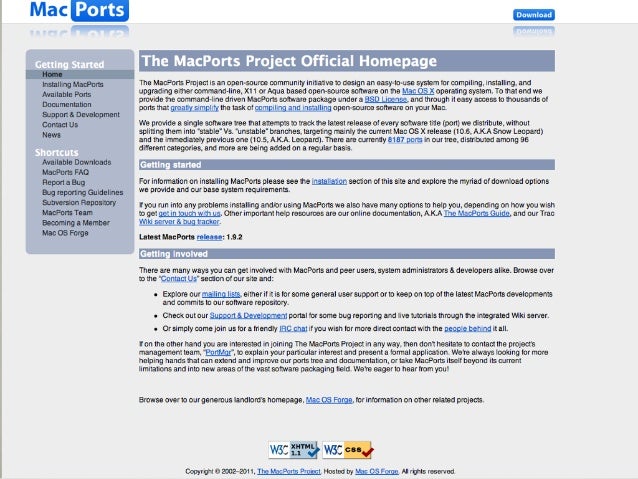Software within virtual operating system environments on each Mac Computer you own or control that is already running the Apple Software, for purposes of: (a) software development; (b) testing during software development; (c) using OS X Server; or (d) personal, non-commercial use. The grant set forth in Section 2B(iii) above does not permit you.
According to IBM Research: “Software development refers to a set of computer science activities dedicated to the process of creating, designing, deploying and supporting software.”
Software itself is the set of instructions or programs that tell a computer what to do. It is independent of hardware and makes computers programmable. There are three basic types:
System software to provide core functions such as operating systems, disk management, utilities, hardware management and other operational necessities.

Programming software to give programmers tools such as text editors, compilers, linkers, debuggers and other tools to create code.
Application software (applications or apps) to help users perform tasks. Office productivity suites, data management software, media players and security programs are examples. Applications also refers to web and mobile applications like those used to shop on Amazon.com, socialize with Facebook or post pictures to Instagram.1
A possible fourth type is embedded software. Embedded systems software is used to control machines and devices not typically considered computers — telecommunications networks, cars, industrial robots and more. These devices, and their software, can be connected as part of the Internet of Things (IoT).2
Software development is primarily conducted by programmers, software engineers and software developers. These roles interact and overlap, and the dynamics between them vary greatly across development departments and communities.
Programmers, or coders, write source code to program computers for specific tasks like merging databases, processing online orders, routing communications, conducting searches or displaying text and graphics. Programmers typically interpret instructions from software developers and engineers and use programming languages like C++ or Java to carry them out.
Software engineers apply engineering principles to build software and systems to solve problems. They use modeling language and other tools to devise solutions that can often be applied to problems in a general way, as opposed to merely solving for a specific instance or client. Software engineering solutions adhere to the scientific method and must work in the real world, as with bridges or elevators.
Software developers have a less formal role than engineers and can be closely involved with specific project areas — including writing code. At the same time, they drive the overall software development lifecycle — including working across functional teams to transform requirements into features, managing development teams and processes, and conducting software testing and maintenance.3
Software Development For Os X Download
The work of software development isn’t confined to coders or development teams. Professionals such as scientists, device fabricators and hardware makers also create software code even though they are not primarily software developers. Nor is it confined to traditional information technology industries such as software or semiconductor businesses. In fact, according to the Brookings Institute, those businesses “account for less than half of the companies performing software development.”
An important distinction is custom software development as opposed to commercial software development. Custom software development is the process of designing, creating, deploying and maintaining software for a specific set of users, functions or organizations. In contrast, commercial off-the-shelf software (COTS) is designed for a broad set of requirements, allowing it to be packaged and commercially marketed and distributed.
macOS Big Sur takes the most advanced operating system in the world to a whole new level of power and beauty, making your apps look better than ever on an all-new interface. New widget features and the new widget gallery help you deliver more value to your users. Adding intelligence to your apps with machine learning is even simpler and more extensive with new tools, models, training capabilities, and APIs. You can create more powerful Mac versions of your iPad apps with Mac Catalyst. And you can now easily bring your extensions to Safari — and to the App Store.

All-new Interface
macOS Big Sur brings a new design that’s been finely tuned for the powerful features that make a Mac a Mac. Core features, such as the menu bar and Dock, take advantage of the large Mac display, with translucent backings and spacious pull-down menus. The new Control Center, designed just for Mac, provides quick access to controls while keeping the menu bar clutter-free. Notification Center puts recent notifications and powerful new widgets together in a single view for at-a-glance information as you work. And a streamlined new design for apps features full-height sidebars and integrated toolbar buttons.
Widgets
Easily build widgets using the WidgetKit framework and the new widget API for SwiftUI. Widgets now come in multiple sizes, and users can visit the new widget gallery to search, preview sizes, and add them to Notification Center to access important details at a glance.
Safari Extensions
With support for the popular WebExtension API, it’s even easier to bring powerful extensions to Safari. Xcode 12 even includes a porting tool to streamline the process.
The new Extensions category on the Mac App Store showcases Safari extensions, with editorial spotlights and top charts to help users discover and download great extensions from the developer community.
Machine Learning
With macOS Big Sur, creating apps that leverage the power of machine learning is even easier and more extensive with additional tools in Core ML for model deployment, new models and training capabilities in Create ML, more APIs for vision and natural language, and improved resources for training on Mac and converting models to Core ML format.
Mac Catalyst

Create even more powerful Mac versions of your iPad apps. Apps built with Mac Catalyst now take on the new look of macOS Big Sur and help you better define the look and behavior of your apps. You can choose to turn off automatic scaling of iPad controls and layout, allowing you to precisely place every pixel on the screen. Provide full control of your app using just the keyboard, take advantage of the updated Photos picker, access more iOS frameworks, and more.
User privacy on the App Store.
Later this year, the Mac App Store will help users understand apps’ privacy practices. You’ll need to enter your privacy practice details into App Store Connect for display on your product page.
Universal App Quick Start Program
Get your apps ready for Apple Silicon Macs. Create next-generation Universal apps that take full advantage of the capabilities the new architecture has to offer. Get all the tools, resources, support, and even access to prototype hardware you’ll need. You can also watch a collection of videos from WWDC20 to help you get started.
Mac Os X Software Update
Tools and resources
Software Development For Os X Factor
Use Xcode 12 beta and these resources to build apps for macOS Big Sur.